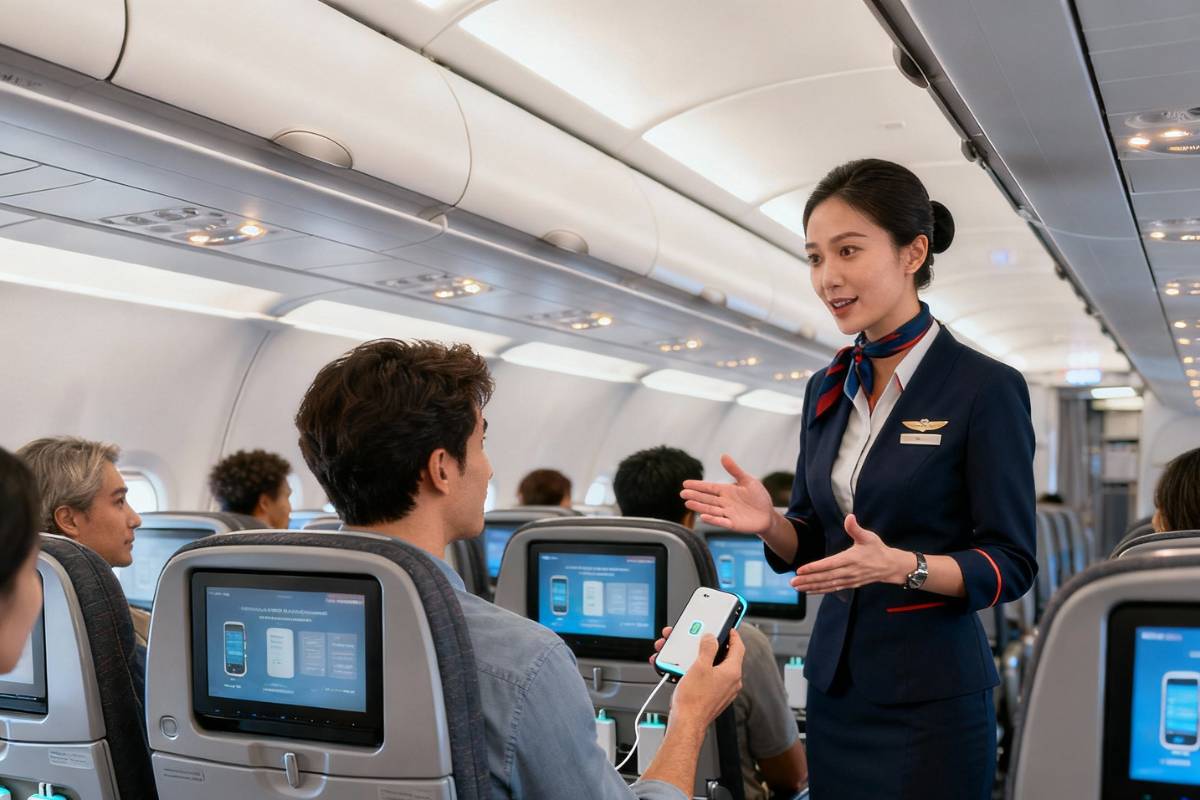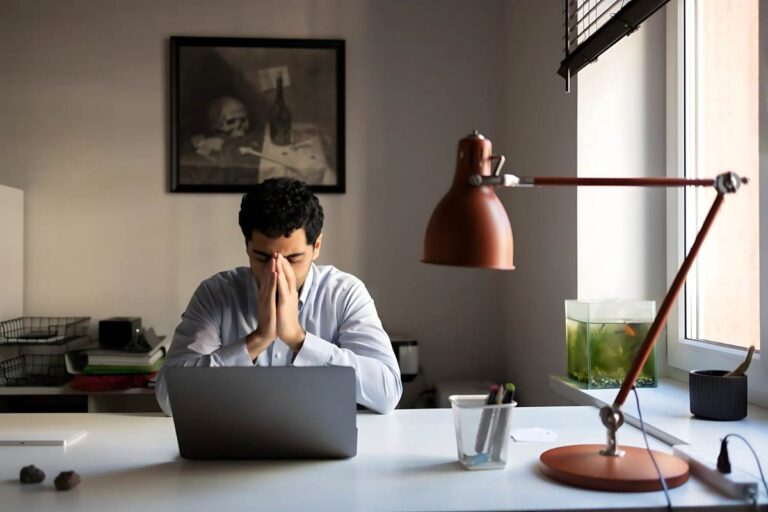A small but important change in airline policy is changing the way people fly to the United Arab Emirates. A portable power bank is as important to many travelers as a passport. It keeps phones, tablets, and laptops charged on long trips. But starting on October 1, 2025, major UAE-based airlines like Emirates and flydubai will have new rules about how these common gadgets can be used on board.
The bottom line is? You can still bring your power bank, but you can’t use it on the plane. Some travelers are confused about what this means for their travel habits because of a global push for better aviation safety. It’s a classic example of a small problem that leads to a big improvement in safety. So, let’s get to the bottom of what’s really going on.
A Full Guide to the New Power Bank Policy
Emirates first announced the change in August 2025, and flydubai quickly changed its own rules to match. The change went into effect on October 1, 2025. The main point of the policy isn’t that you can’t carry power banks, but that you can’t use them once you’re in the air. The goal is clear: lower the chance of lithium-ion batteries catching fire.
If you’re flying with these airlines, here’s what you need to know:
- Only One Power Bank: Each passenger is only allowed to bring one power bank in their carry-on.
- Capacity Matters: The power bank must have a capacity of 100 watt-hours (Wh) or less, and this information must be clearly marked on the device itself. Most of the time, anything over this limit is not allowed.
- No use in flight: This is the most important change. You can’t use the power bank to charge any of your devices, and you can’t plug it into the plane’s power supply to charge it.
- Proper Storage is Important: Forget about the overhead bin. You have to keep your power bank under the seat in front of you or in the seat pocket. Why? The cabin crew needs to be able to get to it right away if something happens.
- Keep it Safe: The device needs to stay off and be safe from being turned on by mistake or short-circuited. Airlines say you should keep it in its original packaging or a protective pouch.
- Never in Checked Luggage: This isn’t a new rule, but it’s more important than ever. Power banks are not allowed in checked baggage because they could catch fire in the cargo hold.
The Science Behind the Ban on Lithium-Ion Batteries
But why the sudden crackdown on a device that doesn’t seem to be dangerous? The chemistry of the lithium-ion and lithium-polymer batteries that power these devices holds the key. These batteries are usually safe, but they can start a fire if they are broken, faulty, or overcharged.
Thermal runaway is the exact danger. It’s basically a chain reaction that happens when a battery cell gets too hot, which makes the temperature and pressure rise quickly. This can make the cell release hot, flammable gases, which could cause a fire or even an explosion. In the small space of an airplane cabin, this kind of thing could be very bad.
Airlines have seen a worrying rise in battery-related problems in the aviation industry, which led to this proactive safety measure. Emirates said in a statement that the new rules were put in place after a “comprehensive safety review” to lower these rising risks. It’s not just a random choice; it’s based on data and backed by aviation safety groups like the UAE’s General Civil Aviation Authority (GCAA) and the International Air Transport Association (IATA).
A Bigger Trend: How Other Airlines Deal with Power Banks
Emirates and flydubai are not the only ones doing this. This increased caution about lithium batteries is part of a larger trend in aviation around the world. Many other big international airlines have already put similar rules in place.
Singapore Airlines, Qatar Airways, Air India, Cathay Pacific, and Korean Air are just a few of the airlines that have rules that limit the use and carrying of power banks. The rules are pretty much the same for everyone:
- Power banks with a capacity of less than 100Wh are usually allowed in carry-on bags.
- Power banks with a capacity of between 100Wh and 160Wh may be allowed, but you usually need to get permission from the airline first.
- Most of the time, passenger planes won’t let you bring a power bank that can hold more than 160Wh.
This consistency shows that the whole industry is taking a known safety risk seriously, so safety rules will be followed no matter which airline you fly with.
How do I keep my devices charged?
For anyone on a long flight, the ban on using power banks in the air might sound like a nightmare. But here’s the good news: you probably won’t even need it. Airlines knew this would be a need and have made sure their planes are ready for it.
Most of the planes that Emirates, flydubai, and Etihad own have power outlets in the seats, either as a standard electrical socket or a USB port. For example, Emirates has said that all of its planes have charging ports in the seats. You can still charge your phone, tablet, or laptop from your seat, though.
Follow these simple tips to make sure your trip goes smoothly:
- Charge Before You Fly: The easiest way to fix the problem. Before you go to the airport, make sure that all of your devices and your power bank are fully charged.
- Put your cables in your bag: Don’t forget to put your charging cables in your carry-on bag so you can use the power in your seat. If you bring your own cable, you can also be sure to get the fastest charging speed.
- Set Realistic Expectations: Most planes have charging ports, but some older planes may have slower ports or fewer outlets. It’s always a good idea to be ready with devices that are fully charged.
Other Things You Can’t Bring to the UAE Besides Power Banks
Emirates and flydubai are not the only ones doing this. This increased caution about lithium batteries is part of a larger trend in aviation around the world. Many other big international airlines have already put similar rules in place.
Singapore Airlines, Qatar Airways, Air India, Cathay Pacific, and Korean Air are just a few of the airlines that have rules that limit the use and carrying of power banks. The rules are pretty much the same for everyone:
Some of the things on the restricted list that might surprise you are:
- Food Items: You can’t usually bring cooked food or some basic kitchen items. For example, copra (dried coconut in whole or crushed form) and some spices, like chili powder, are not allowed in either carry-on or checked bags because they can catch fire.
- Liquids, Aerosols, and Gels (LAGs): The same rule applies to all of these. You must put all liquids in containers that hold 100ml or less and put them in a single, clear, resealable plastic bag.
- General Dangerous Goods: This group includes things like weapons, explosives, flammable materials, and chemicals that are dangerous. If you’re not sure about something, it’s always best to check the airline’s policy on dangerous goods.
Knowing How Much Luggage You Can Bring
Finally, it’s easier to follow the rules if you know how much luggage you can bring. Emirates says that carry-on bags can’t be bigger than 55 x 38 x 22 cm. The weight limit usually changes depending on the class. For example, in Economy class, it’s 7 kg, and in premium classes, it’s 14 kg. The weight limits for checked bags are also high, ranging from 20 to 35 kg for Economy fares and up to 50 kg for First Class.
In the end, the goal of these changes to the rules is to make sure that every flight is as safe as it can be. It may seem like a hassle at first to not be able to use a power bank, but in reality, it’s a small change that makes a big difference in safety on board. So, get your batteries charged, pack carefully, and have a great flight to the UAE.






















